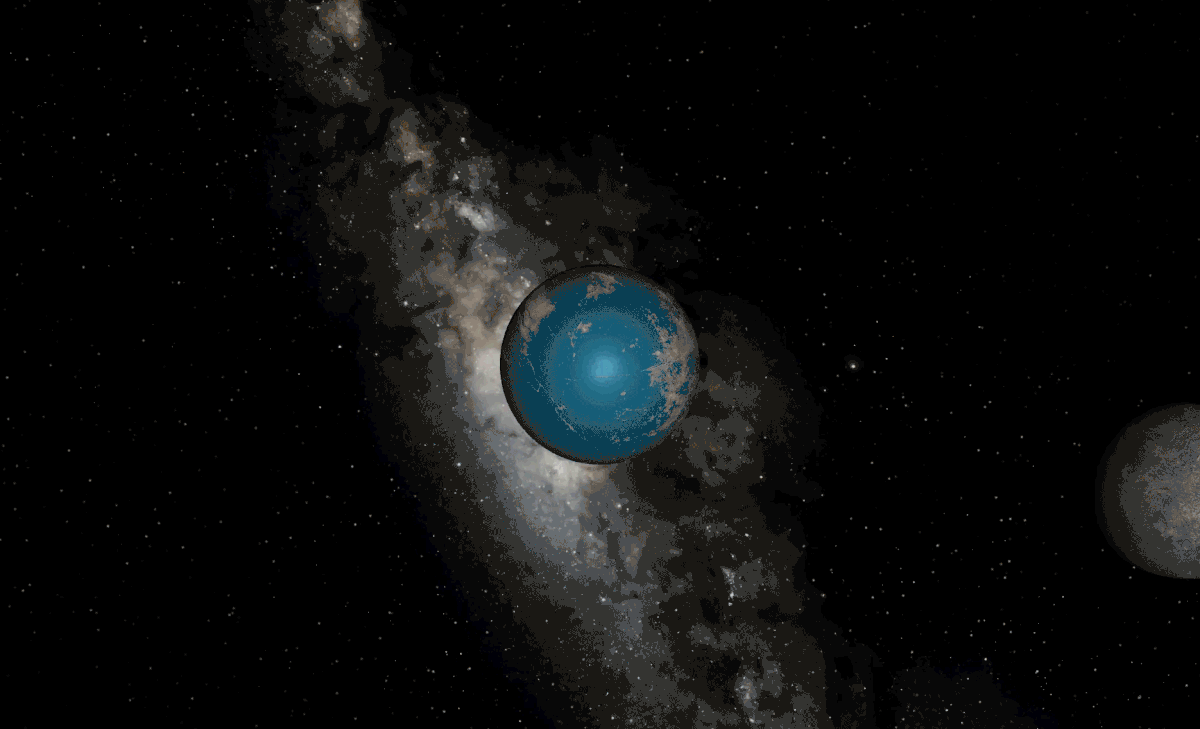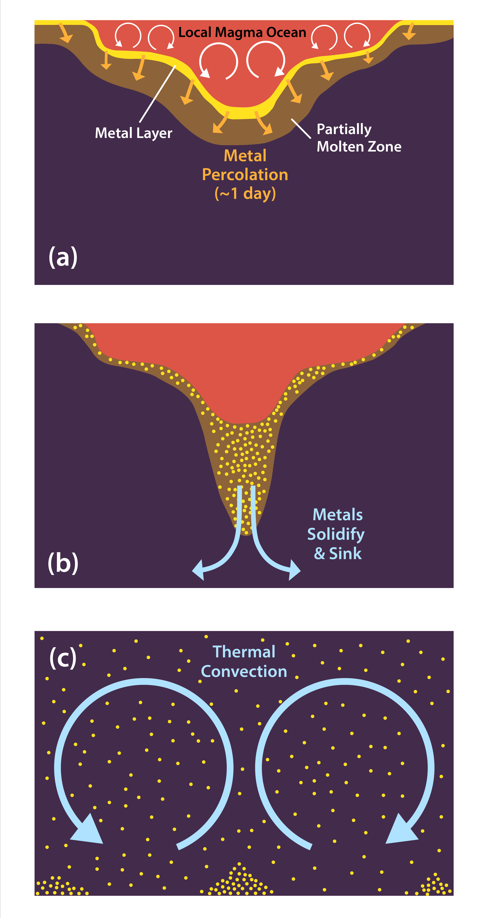How precious metals were brought to Earth and preserved in a magma ocean
Ancient impacts brought gold and other precious metals to our planet, and a magma ocean produced with these impacts' heat trapped those metals and kept them safe.

When giant impacts brought Earth its precious metals such as gold and platinum long ago, those metals remained near our planet's surface thanks to a molten magma ocean. This ocean, formed by the impact itself, was able to trap the metals and keep them safe.
The gold in our jewelry, the platinum in our computer electronics, the iridium in our OLEDs (organic LEDs) — all of it — has had a long and tumultuous journey. These elements originally formed from the mergers of neutron stars that resulted in violent kilonova explosions. Then, they seeded the giant molecular cloud of star-forming gas and dust that eventually formed our solar system billions of years ago.
When Earth formed, these precious metals were included in its structure, too. They’re specifically called highly siderophile elements, or HSEs, which means they are strongly attracted to iron. Besides gold, iridium and platinum, the other HSEs are osmium, palladium, rhenium, rhodium and ruthenium.
There are large amounts of those precious metals from the ancient solar system locked up within the dense iron of Earth’s core; so you might assume that any precious metals delivered by later impacts should have also sunk to the core. Fortunately for us, they didn’t.
But how did the precious metals that are so valuable to us today stay near the Earth’s surface?
Related: How neutron star collisions flooded Earth with gold and other precious metals
Geophysicists have struggled with this question for decades, and now Jun Korenaga, who is a professor of geophysics at Yale University,and Simone Marchi, a planetary scientist at the Southwest Research Institute in Colorado may have an answer at last.
Breaking space news, the latest updates on rocket launches, skywatching events and more!
After the bulk of Earth formed, it was slammed into several times by rogue protoplanets. One such collision with a Mars-sized object, known as Theia, resulted in debris that formed Earth’s Moon. Most of Theia, and the other protoplanets, were subsumed by the growing Earth, however. These protoplanets also contained precious metals, but rather than sink through Earth’s core where they could join the iron, the HSEs became trapped within Earth’s mantle, which allowed them easy access to the surface.
This was all previously known, but nobody knew how the metals were trapped — until now, thanks to computer models run by Korenaga and Marchi.
"Our research is a good example of making an unexpected discovery after re-examining conventional wisdom," said Korenaga in a statement.
Their model shows how, after each giant impact very early in the young Earth’s history, a huge ocean of magma formed within Earth’s lithosphere, which describes the crust and upper mantle. The precious metals begin sinking through this ocean until they reached a partially molten transition layer. This slowed the metals' descent, allowing the lower mantle to cool and solidify before the HSEs could percolate through it to the core. Trapped in the mantle, the HSEs were then subject to convection from thermal currents emanating from Earth’s hot core, which to this day continue to move the precious metals around the Earth and bring them to the surface.
"This transient region almost always forms when a big impactor hits the early Earth, making our theory quite robust," said Marchi.
While this all took place some 4.5 billion years ago, echoes of these impacts and the resulting transition regions still remain, in the form of two "large low-shear-velocity provinces," or LLSVPs that appear as geophysical anomalies in the deep mantle beneath Africa and the Pacific Ocean. When geophysicists describe the LLSVPs as large, they’re not kidding: they make up as much as 9% of Earth’s volume, stretching thousands of kilometers laterally and more than 1,000 kilometers vertically from the mantle’s boundary with the core.
The findings were published on Oct. 9 in the journal Proceedings of the National Academy of Sciences.

Keith Cooper is a freelance science journalist and editor in the United Kingdom, and has a degree in physics and astrophysics from the University of Manchester. He's the author of "The Contact Paradox: Challenging Our Assumptions in the Search for Extraterrestrial Intelligence" (Bloomsbury Sigma, 2020) and has written articles on astronomy, space, physics and astrobiology for a multitude of magazines and websites.

